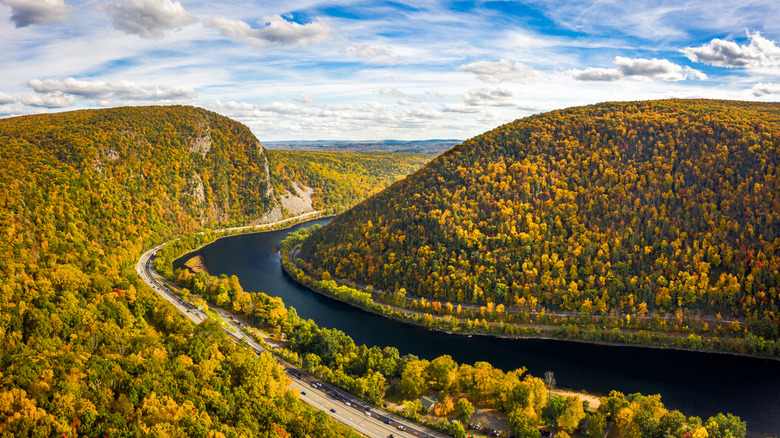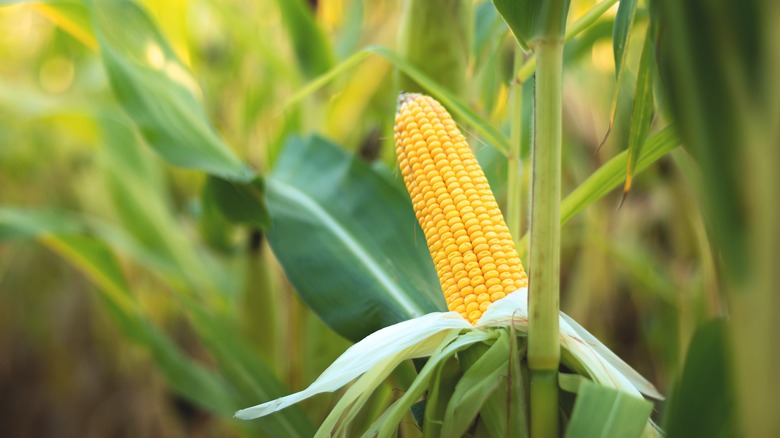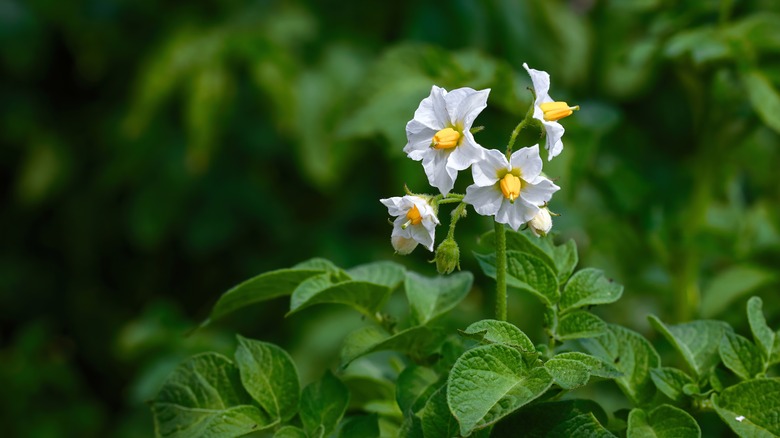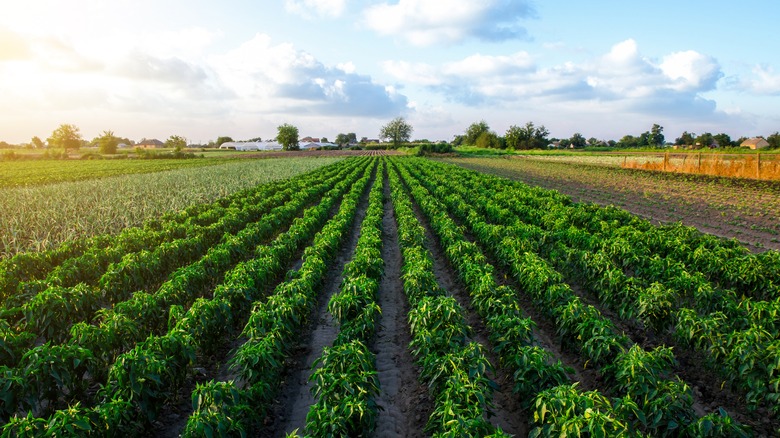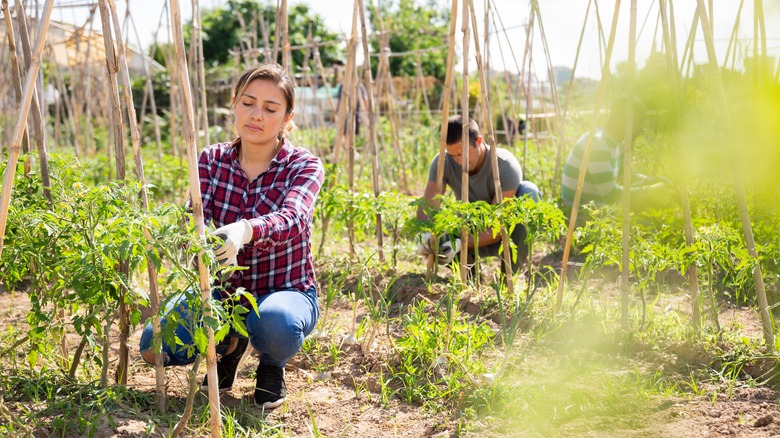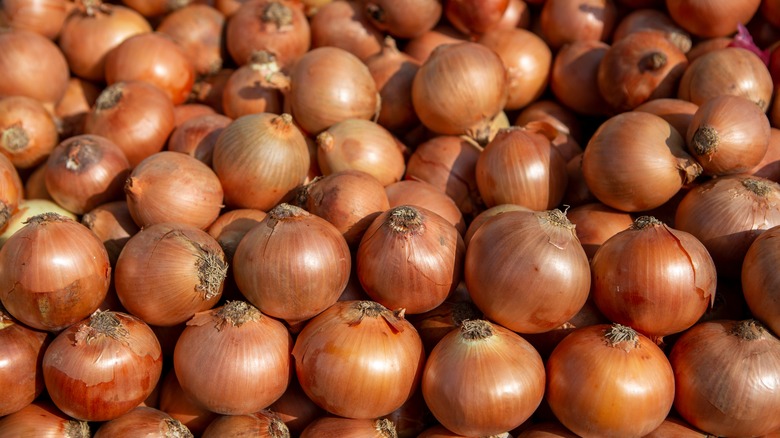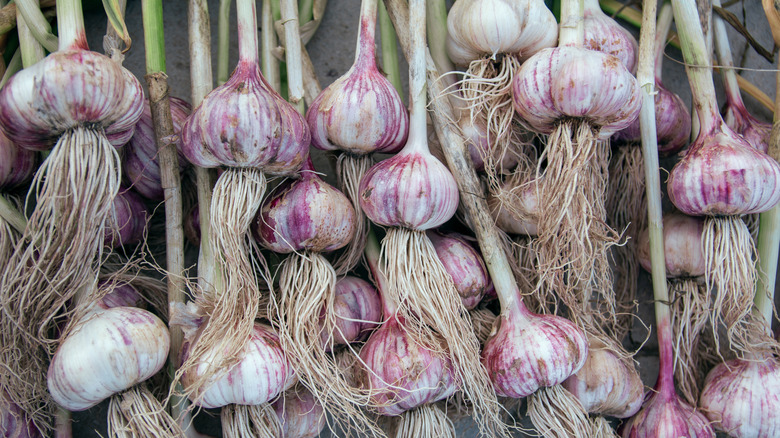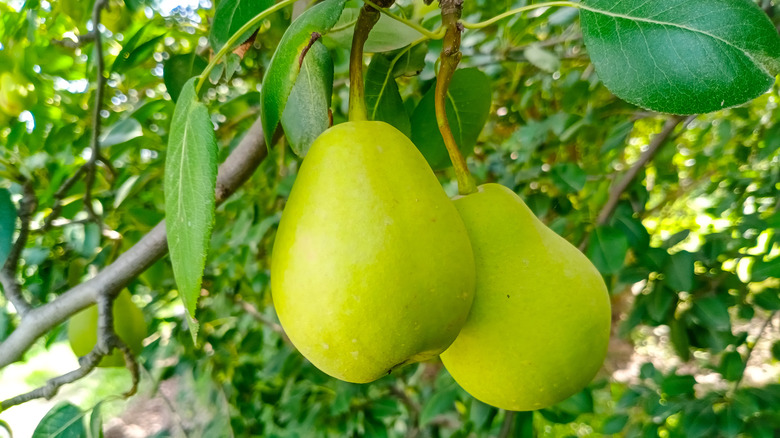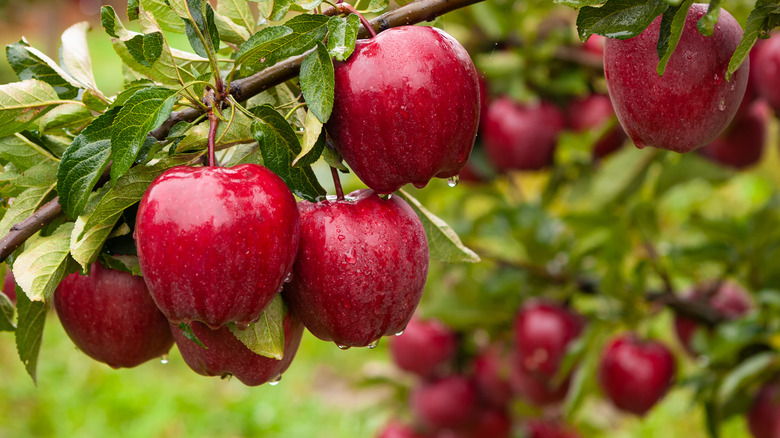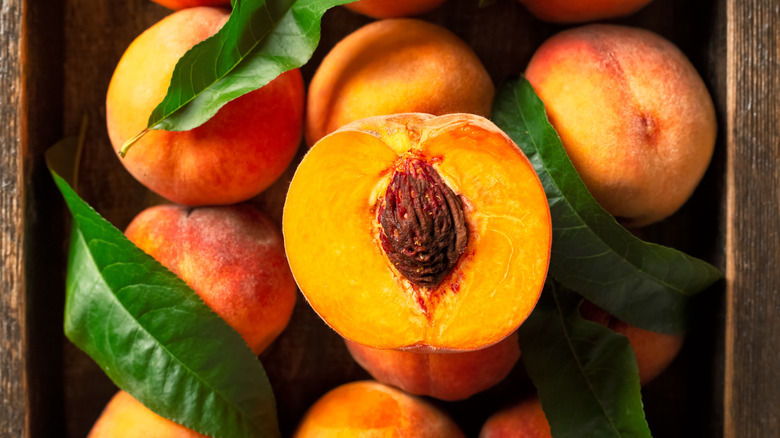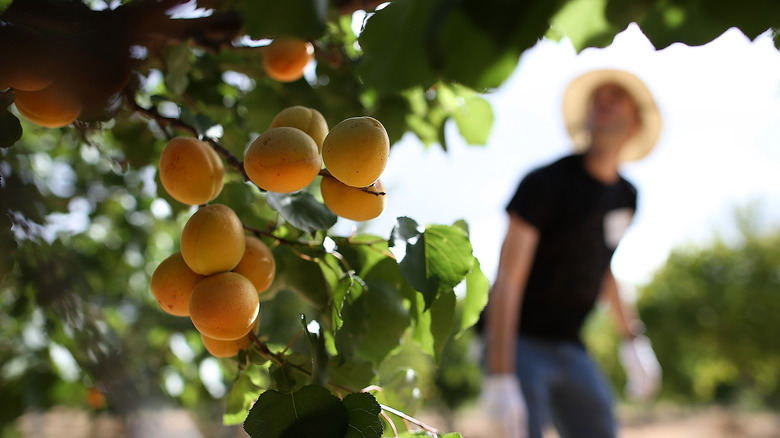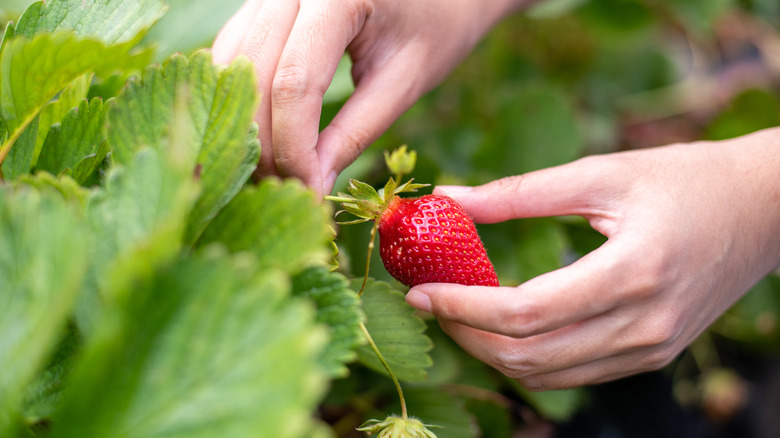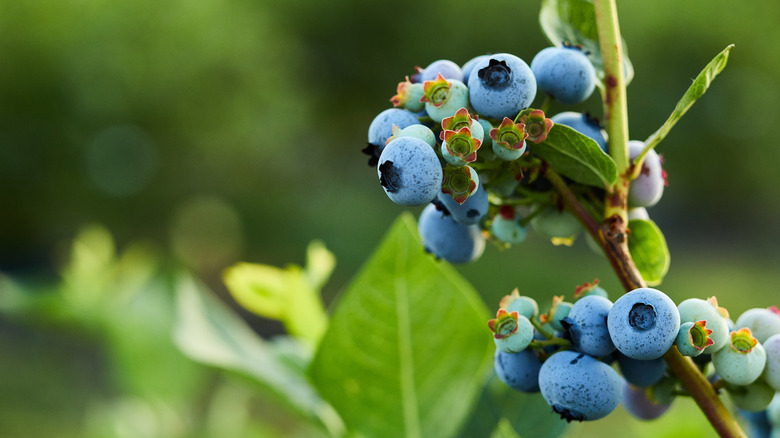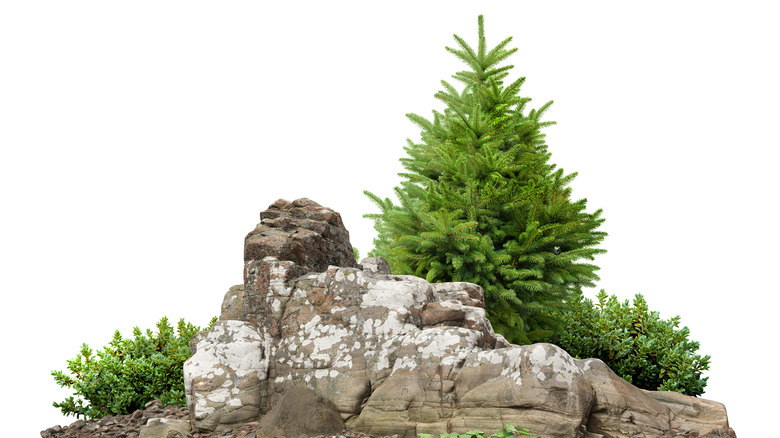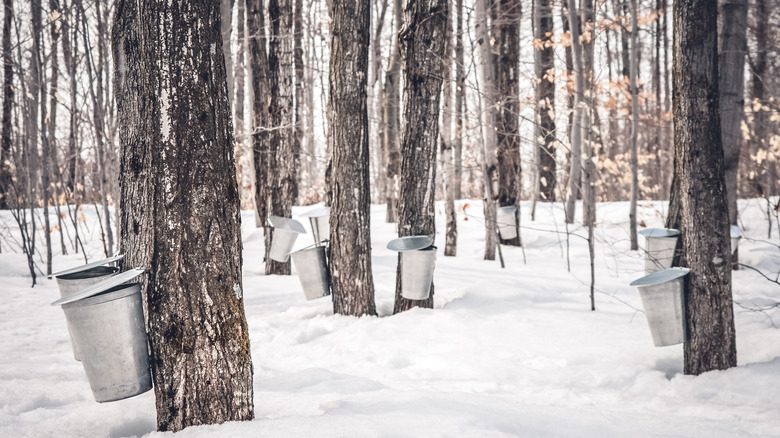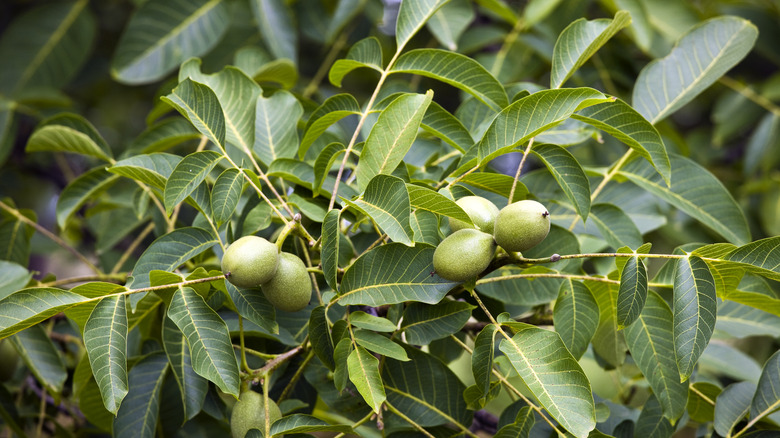15 Best Plants To Grow In USDA Zone 7
The USDA zone 7 runs in a horizontal band along the central states of the U.S., reaching down from Long Island in New York into the interior of North and South Carolina; it then extends in a relatively straight shot through to North Texas and into New Mexico, Arizona, and southern Colorado (via Love to Know).
Zone 7 begins a stretch of the United States in which growing isn't dictated by the cold but rather by heat, according to Gardener's Supply Company. In areas farther north (and in climates with greater cold duration), planting begins at a rapid scramble as soon as the winter starts to subside. From zone 7 downward through lines of latitude, planting is scheduled in relation to when the heat begins to reach its peak. These areas see enough warm weather to allow for multiple short-season crops or a slower pace of growth in a long-season planting without risking failure due to frost on the other end of the summer. Conversely, cold creeps in slowly as the fall begins, providing a longer harvest and greater ease in cultivation.
Some of the best plants to grow in zone 7 are typical vegetables and fruits that American families love. Of course, staple crops like potatoes, corn, peppers, and beans are found in abundance here, but you'll also find some more exotic growth in the gardens of careful cultivators.
1. Corn
Corn performs best in well-draining but still consistently moist soil. When planted in short rows and using different maturation timelines or planting dates, you can generate a long harvest calendar and enjoy the fruits of your labor for a considerable period (via Almanac). Corn is a heartland staple crop, and it has been grown in the Americas for thousands of years — long before European settlers arrived on these shores (via North Dakota State University). A small field of sweet corn can make for an immensely tasty treat, and zone 7 is the perfect place for it to grow.
2. Potatoes
Potatoes can grow across many different USDA zones, but with each climate region, the important thing is to plant them as the weather begins to heat up for maximum yield. Potatoes are a fast-growing tuber vegetable; harvest can begin in as little as 60 days for some varieties. Waiting until your potato plants begin to flower and fruit (with green bulbs that resemble tomatoes) is a sure sign that you've successfully cultivated new spuds beneath the soil. Also, waiting until the green aerial growth has died away will give you the best weight yield (via Lovely Greens).
3. Peppers
Gardener's Supply Company notes that peppers of many varieties can be successfully grown in zone 7, as long as you wait until April. Peppers come in sweet and spicy varieties, and many are native to colder regions in Europe or Asia, making some perfectly adapted to the colder areas of this zone by nature. Regardless of the specific peppers that you and your family enjoy, it can be highly beneficial to start them inside in late February or early March and then move them out into the garden after they've taken advantage of this head start.
4. Tomatoes
Tomatoes are grown across the United States, and they come in a huge number of subtypes and varieties. P. Allen Smith reports that moving them outside in May or starting them in the garden at this time will give your plants the perfect blend of time to maturity and average heat to support healthy growth. Alternatively, you can purchase plants that are already established from a nursery (instead of growing your tomatoes from seed). P. Allen Smith notes that a plant about 1 foot tall with dark green leaves is worth bringing home to your garden.
5. Onions
Onions can be grown in many areas of the United States but in zone 7, you will enjoy the best performance from short-day onion varieties, according to the North Carolina Cooperative Extension. Planting your onions in the fall will give you a great cold-weather crop to occupy a portion of your garden when other elements are going dormant or fall out of use. Harvesting in the late spring gives you a healthy crop of onions and a newly freed-up space to prepare for a fast turnaround for new warm-weather planting tasks.
6. Garlic
Garlic needs cold weather to support healthy growth. They can be planted and virtually forgotten about through the winter months. Planting individual garlic cloves is all it takes to create a new, full head of garlic. With the colder days and shorter hours of sunlight, the garlic will naturally split into individual cloves surrounding the main stalk (via the Royal Horticultural Society). If you want to grow a crop for the greens or are interested in experimenting with a single-bulb clove, planting garlic in warmer weather can provide you with this output instead.
7. Pear trees
Gardener's Path has compiled a list of the most sought-after pear varieties, with all growing abundantly well in zone 7, including the Anjou, Bartlett, and Pineapple trees. These cultivars are a great asset in the garden because the fruit can be used in desserts or as a raw snack on a warm afternoon. In addition, many varieties can self-pollinate, but planting them in pairs is always a good idea to promote better success rates. You can even pair two varieties in the yard for this pollination boost while enjoying more than one type in your diet.
8. Apple trees
Apples perform admirably in zone 7, and a number of high-quality varieties will flourish if planted in a garden here, according to Gardening Know How. Of course, it's important to remember that apples and much other fruit produce won't grow true to seed, instead producing a crab apple tree. You'll need to purchase a tree from your local nursery or a scion (woody cutting) of the variety you hope to cultivate. These are fairly easy to find, so a brief internet search should provide success here.
9. Peach trees
Peaches can grow successfully between zones 4 and 9, but the peak performance occurs in the sweet spot ranging from zones 6 to 8 (with USDA zone 7 sitting perfectly in the center of the peach-growing country), according to Almanac. These trees should be planted in the yard in late winter or early spring, while they remain dormant just before the weather begins to heat up and promote explosive growth across the garden. In zone 7, you can select nearly any variety that suits your taste without worrying much about their cold hardiness.
10. Apricot trees
Apricots are another great option for zone 7 gardens (via Gardening Know How). These are often purchased as grafted trees in a young phase of life. Planting a small apricot tree will give you full control over-pruning and care during the first years, and then you'll have many great years of fruit production that follow. Apricots are a favorite across the United States, with the soft fruit being easy to peel apart from the seed within and even easier to eat!
11. Strawberries
Family, Food + Garden notes that strawberry plants perform their best in temperatures ranging from 60 to 80 degrees Fahrenheit but can withstand winter weather that drops down to as low as 25 degrees. Of course, you'll want to cut down leafy growth over the winter and mulch the beds heavily to insulate your plants' roots against the chill. Planting strawberries (bare-root, runners, or even seed-growing) in the fall or winter will give you the best potential yield during the following spring and into the following years.
12. Blueberries
Blueberries grow on bushes and perform best in climates that see a fluctuation in temperature, providing a necessary chill along with the warmer conditions. Almanac notes that people can successfully cultivate them in all but the coldest regions. When adding a new blueberry plant to your garden, you should try to find bare-root cultivars that are at least a year old (up to about three years) for the best results. Planting these berries in an area of the yard that sees consistent sun will give you the best crop yield year after year once the plant has been established.
13. Fir trees
According to Gardenia, the Fraser fir (Abies fraseri) thrives in USDA zone 7. These trees are a staple in the Christmas tree market, making their addition a great asset for your ongoing holiday decorating tasks. Alternatively, those with a larger growing space might consider a fir stand to provide a unique asset for the local community and a great side hustle for your family that won't require much time and effort to sustain. Fir trees not only stand in living rooms during the holidays but also make a great aesthetic addition to the yard all year.
14. Sugar maple trees
Sugar maples are prized for the syrup they produce (acting as the source of highly sought-after maple syrup), according to The New York State Maple Pure. Sugar maples grow in natural abundance along the northeastern areas of the United States and Canada's east. They thrive in zone 7 (via Gardenia) and can be used as a foliage element in your yard — creating a bronze flare of color in the fall — or as a means to produce your own maple syrup.
15. Walnut trees
Walnut trees are another great addition to yards across zone 7 (via Love to Know). According to the Royal Horticultural Society, walnut trees are a great shade producer as well, and once they've been established, they require little active care. As a result, walnuts are a favorite in many households, and with the minuscule care that's needed to keep the tree healthy and thrive in this region of the United States (and in other global zones 7), it can serve as one of the most productive and valued additions to any home garden and landscaping overhaul project.
